Integrating Internet of Things (IoT) devices in your business operations is the neural lifeline of your enterprise and the most intelligent path to redefine how your data communicates within departments and provide an edge over your competition to your efficiency standards.
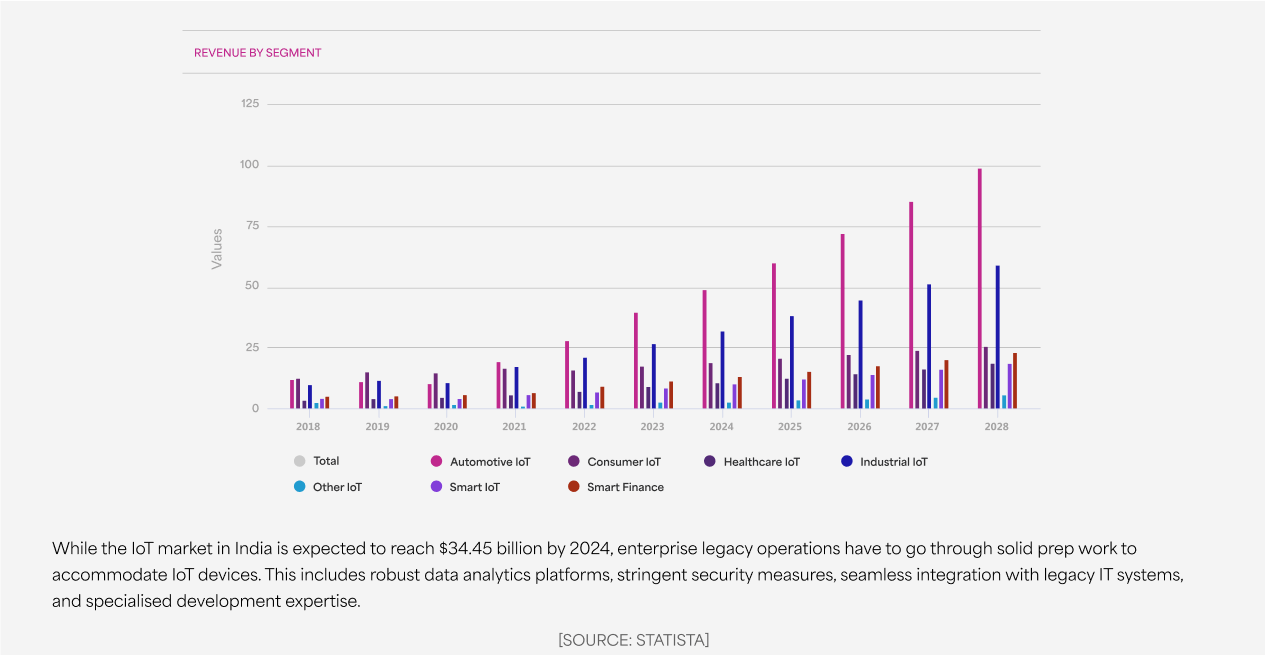
This one-time transformation of your business operations to accommodate IoT devices across departments comes with long-term benefits and bonuses – synchronised data collection and analysis, high operational efficiency due to automation and minimal human intervention, enhanced safety and regulatory compliance, substantial cost savings and incremental growth in revenues and hence, a sustainable competitive edge.
IoT has disrupted many industries and has introduced us to innovative ways of doing the same things by enabling the industry 4.0 era of automation.
In enterprise environments, IoT integration stands for embedding sensors and connectivity in devices and systems to enable real-time data collection and analysis. This connectivity can significantly streamline operations across various sectors, from manufacturing and logistics to healthcare and banking.
Let’s take a look at industries across the spectrum that value IoT as a tool for greater value addition.
Researchers at Frost & Sullivan have valued the number of active IoT-connected devices at 41.76 billion in 2023.
Some tech experts also believe that it is a foregone conclusion that number of connected devices through IoT technology overtakes the number of humans on Earth.
However, IoT’s influence would be incomplete without the introduction of 5G technology.
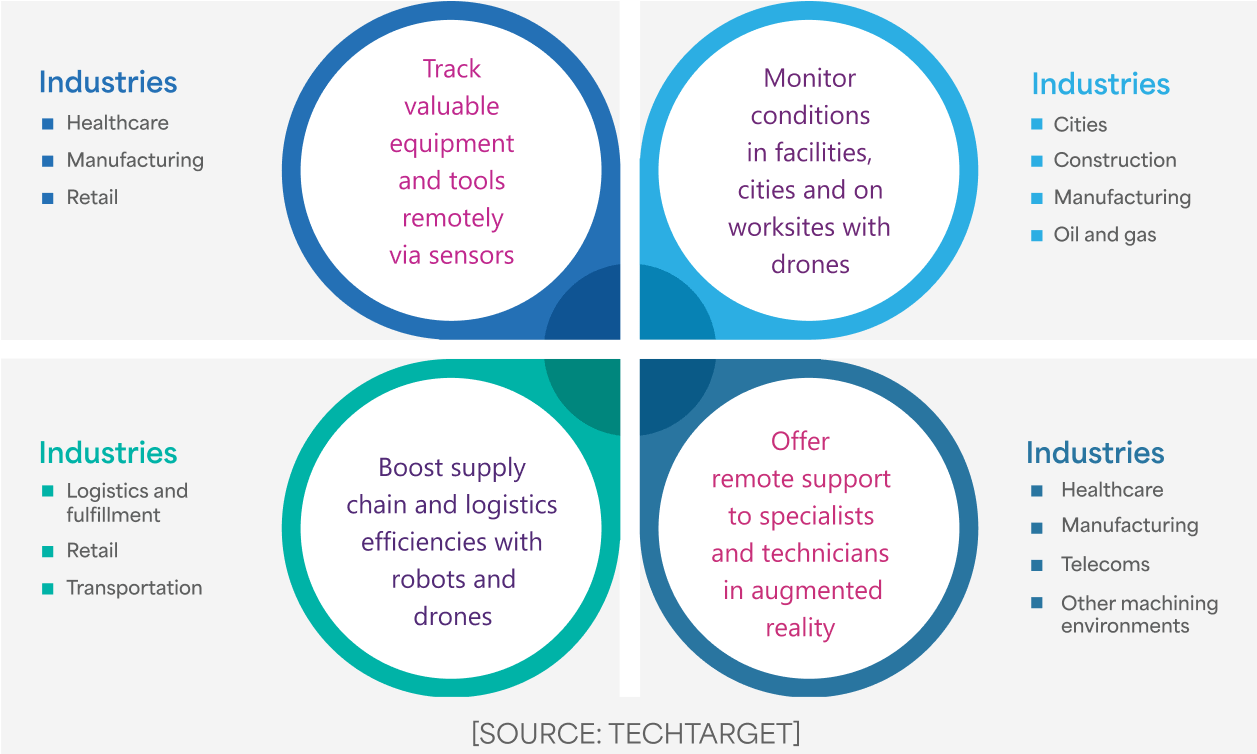
Unlike its predecessor 4G LTE, 5G networks are capable of 50x more speed, 10x less latency, and 1000x more capacity. This means 5G can serve more devices and cater to more data than ever before, delivering fast connectivity and significantly enhanced user experiences.
The role of 5G in Enhancing IoT footprint
Four years back, The COVID-19 pandemic accelerated the need for robust remote working solutions. Today, remote working is a norm in many companies.
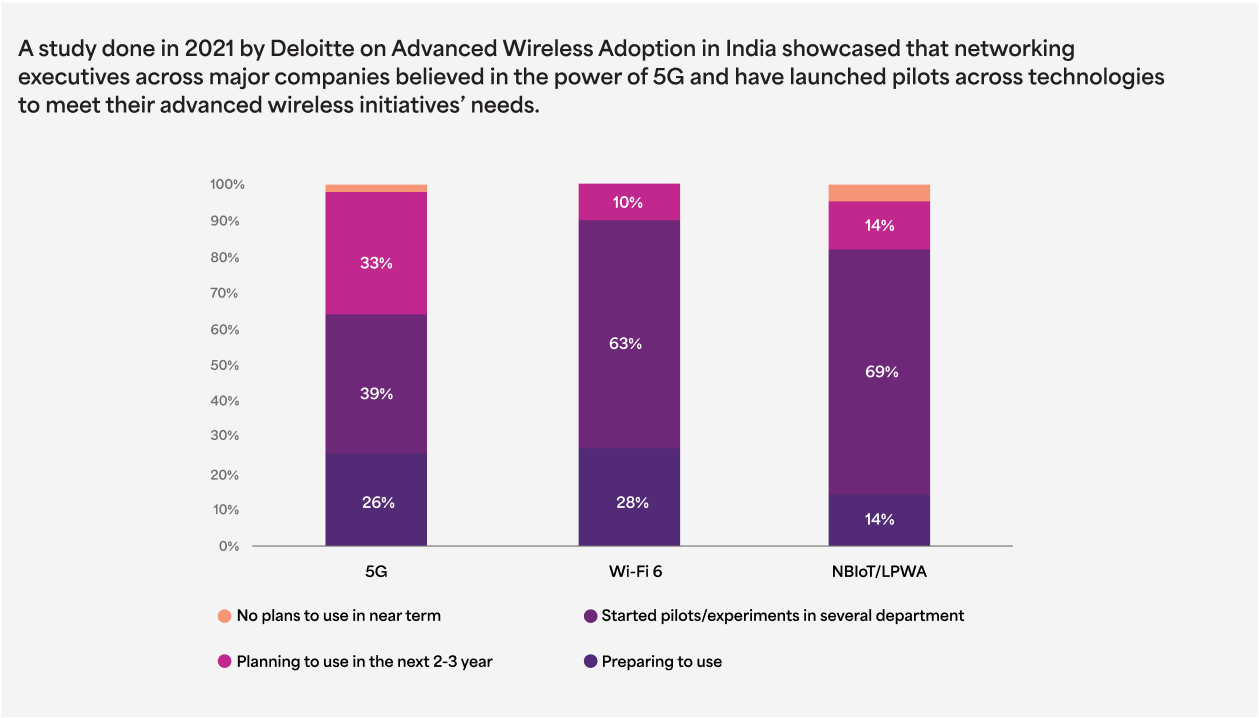
The study showed motivations for adopting advanced wireless include innovating, improving operations and products, and enhancing interactions with customers and employees.

5G’s high-speed, low-latency connectivity enhances virtual collaboration tools, enabling seamless video conferencing, virtual reality (VR) meetings, and cloud-based applications. For instance, rural areas with previously inadequate internet infrastructure can now support remote work, fostering greater inclusion and reducing urban migration by enabling Mobile Broadband over 5G, Ultra Low Reliable Latency (ULRC), and Quality of Service.
Even enterprises can deploy secure, high-performance networks, ensuring data security and operational efficiency for a geographically dispersed workforce. CelerityX addresses this segment with our revolutionary enterprise-grade network lifecycle management platform NetX a one-stop hub for all business Networking and Cybersecurity needs. Industries like BFSI, manufacturing, healthcare, and retail stand to benefit immensely from the NetX platform.
In manufacturing, 5G facilitates smart factories where IoT devices continuously monitor processes, enabling predictive maintenance and minimising downtime. For instance, Bharat Forge, one of India’s largest forging companies, leverages IoT to optimise its manufacturing processes. By integrating IoT sensors into its machinery, the company can monitor equipment health in real-time, predict failures before they occur, and reduce downtime. This predictive maintenance approach has significantly improved operational efficiency and reduced costs. This has resulted in over 15% overall equipment effectiveness (OEE) in forging lines.
5G promises to transform enterprise connectivity by boosting IoT applications and allowing more devices to connect simultaneously with reliable, faster data transmission with a significantly reduced latency.
Median 5G Performance in Select Countries
Speedtest Intelligence* | Q4 2023
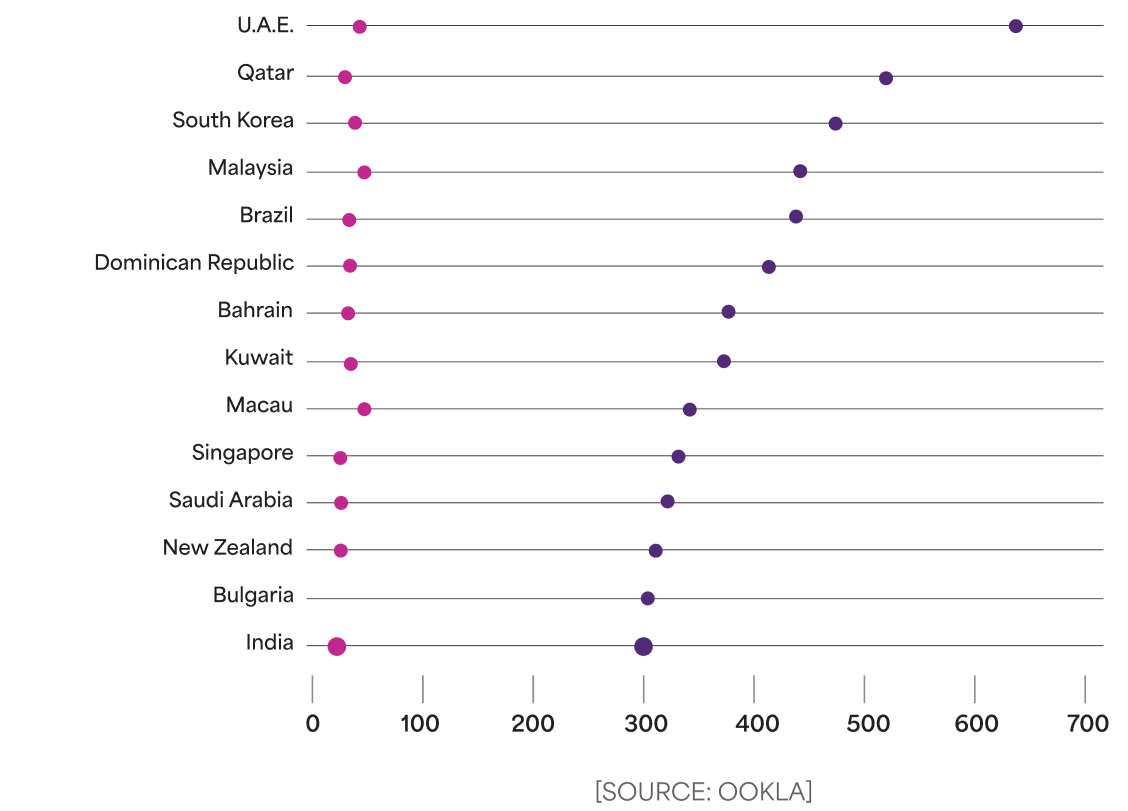
India ranks among the top 15 countries in the world for 5G adoption and media download speeds.
Economic Impact and Investment in 5G
GSMA Intelligence predicts that 5G connectivity in India will reach 72 million by 2025 and 93% by 2040. The Indian economy might profit by $445 billion between 2023 and 2040, with telecom companies set to invest $19.5 billion in sophisticated 5G infrastructure by 2025.
According to an EY poll, 70% of Indian firms intend to spend heavily on 5G over the next three years. As 5G expands the number of endpoints and use cases, cybersecurity becomes inevitably important.
Anything that is connected to the Internet faces the risk of being compromised and attackers may use anything from credential threats to network vulnerability exploits.
In most organisations, cybersecurity threats also stem from faltering business practices such as default passwords that often go unchanged, software and firmware lacking regular security updates, and encryption practices not consistently implemented.
It is important to secure IoT devices and ensure that they do not introduce any threat to the network. One may ask how one can do that?

Enhancing Connectivity with WAN
In this context, today, wide-area networks (WANs) serve as the backbone of enterprise. Wide Area Networks (WAN) are essential for securely linking different company locations and providing continuous communication and data transfer. Businesses can use CelerityX’s unified Network-as-a-Service(NaaS) solution which is part of OneX’s portfolio that covers WAN management, Security, and LAN-side control. OneX not only solves connectivity challenges but also empowers connectivity with lightning-fast speeds and unwavering reliability through bandwidth aggregation.
OneX’s built-in Unified Threat Management (UTM) features shield business locations from cyber threats, ensuring that sensitive data remains safeguarded. OneX also goes beyond the ordinary, transforming your network into an all-in-one powerhouse that simplifies, secures, and supercharges your operations.
CelerityX is at the forefront of improving WAN accessibility with NetX, This solution provides access to high-speed, low-latency internet connectivity designed specifically for enterprise use, assuring smooth integration of IoT and 5G technologies. Complimenting this, OneX, offers comprehensive network management solutions with enhanced security features that include real-time monitoring, predictive maintenance, and scalable connection.
Comparison Chart: Indian Businesses Today vs. NetX Mastering Network Lifecycle Management
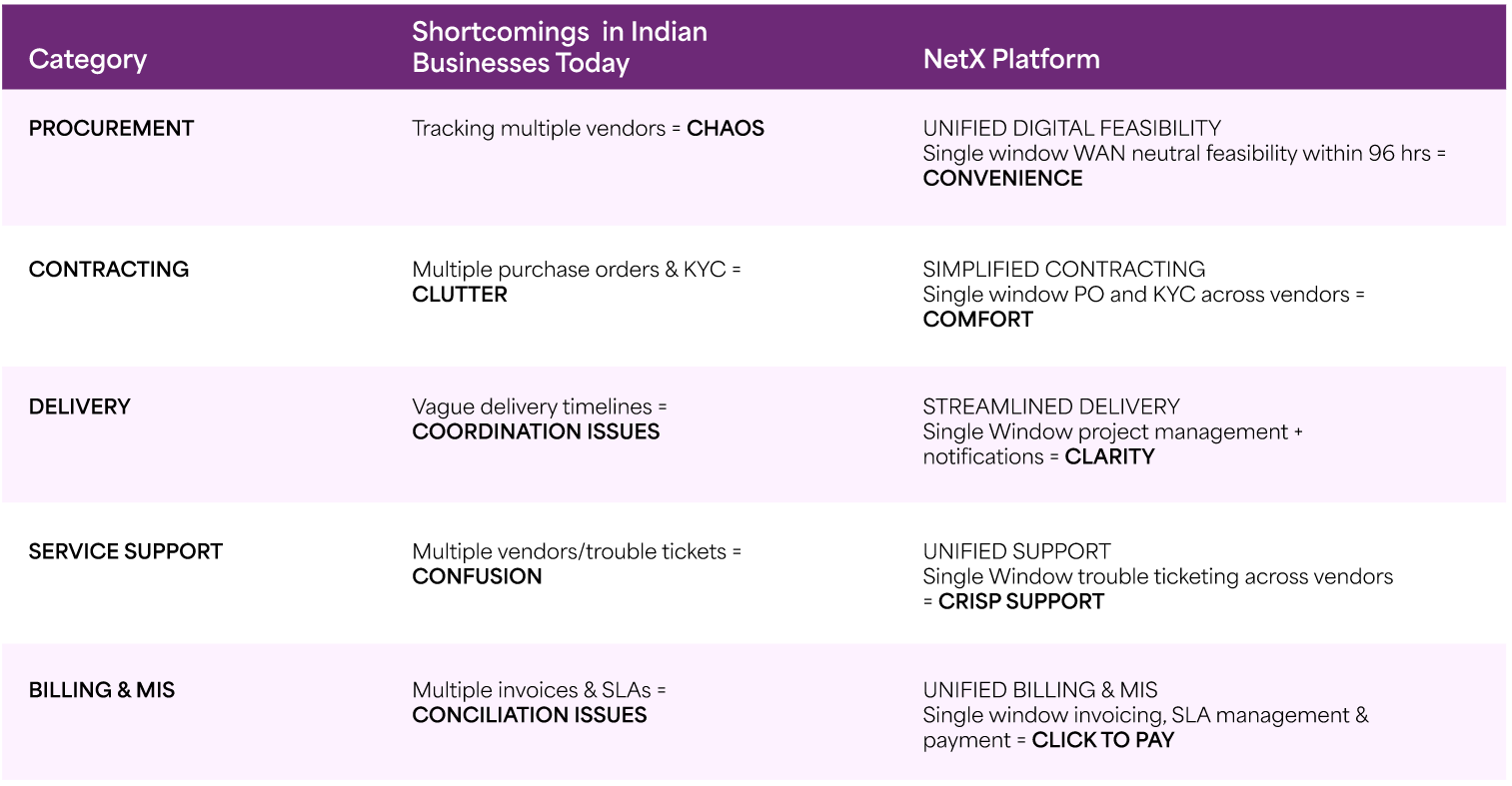
With a Sci-fi dimension technology that is fast gaining momentum is Free Space Optics (FSO) which uses light to transmit data wirelessly through the air. It offers high bandwidth, ultra-low latency, and resistance to electromagnetic interference, making it a valuable addition to the enterprise communication toolkit. FSO can bridge connectivity gaps in enterprise networks, offering a reliable alternative to traditional wired solutions.
One practical application of FSO technology in India is addressing the last-mile connectivity challenges in urban and rural areas.
In densely populated cities like Mumbai and Delhi, deploying fibre optics can be logistically challenging and costly due to road digging and disruptions.FSO can bridge the gap between main fibre networks and end users without the need for extensive physical infrastructure. For example, telecom operators can install FSO units on rooftops of buildings to create high-speed, point-to-point links. This approach not only reduces installation time and cost but also minimises urban disruption.
In rural areas where fibre optic infrastructure is sparse, FSO technology can be used to extend high-speed internet services. For instance, in a remote village in the Northeastern part of the country, an FSO system can connect a local school to the nearest internet hub several kilometers away. This setup can provide students with access to online educational resources and e-learning platforms,bridging the digital divide.
![shutterstock_2290455563 [Converted]-01 1](https://celerityx.com/wp-content/uploads/2024/06/shutterstock_2290455563-Converted-01-1.png)
Emerging technologies are set to revolutionise the future of businesses, driving unprecedented levels of efficiency, innovation, and growth. Artificial Intelligence (AI) and Machine Learning (ML) will automate and predict routine tasks, enhance decision-making, and personalise customer experiences. The Internet of Things (IoT) will improve operational efficiency through real-time data monitoring and enable smarter products and services.
Blockchain technology will offer greater transparency and security, transforming supply chain management and financial transactions with its decentralised nature. The advent of 5G will provide faster, more reliable connectivity, fostering innovations such as augmented reality (AR), virtual reality (VR), and autonomous systems. AR and VR will revolutionise training, customer engagement, and remote collaboration.
These technologies will necessitate new skills, raise cybersecurity challenges, and pose ethical considerations, but businesses that effectively integrate them will gain significant competitive advantages and pioneer newer unprecedented models.




